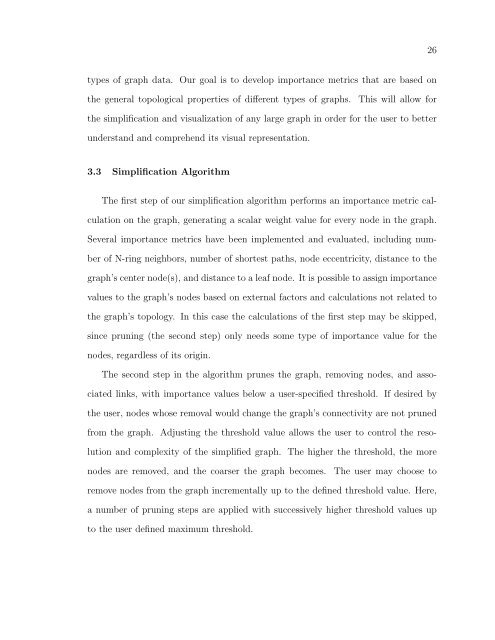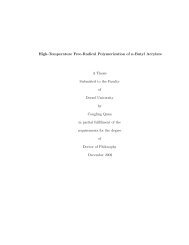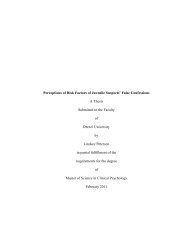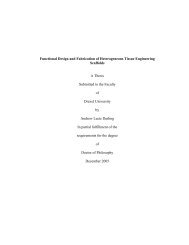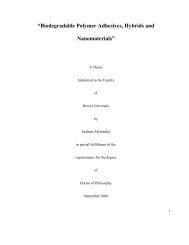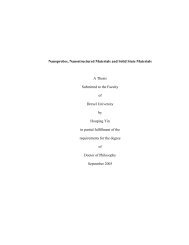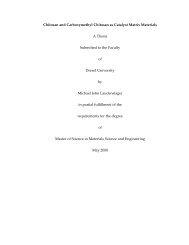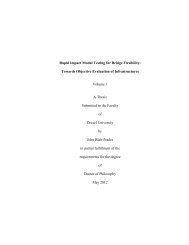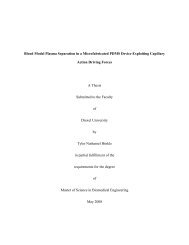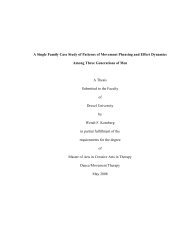Algorithms for the visualization and simulation of mobile ad hoc and ...
Algorithms for the visualization and simulation of mobile ad hoc and ...
Algorithms for the visualization and simulation of mobile ad hoc and ...
Create successful ePaper yourself
Turn your PDF publications into a flip-book with our unique Google optimized e-Paper software.
26types <strong>of</strong> graph data. Our goal is to develop importance metrics that are based on<strong>the</strong> general topological properties <strong>of</strong> different types <strong>of</strong> graphs.This will allow <strong>for</strong><strong>the</strong> simplification <strong>and</strong> <strong>visualization</strong> <strong>of</strong> any large graph in order <strong>for</strong> <strong>the</strong> user to betterunderst<strong>and</strong> <strong>and</strong> comprehend its visual representation.3.3 Simplification AlgorithmThe first step <strong>of</strong> our simplification algorithm per<strong>for</strong>ms an importance metric calculationon <strong>the</strong> graph, generating a scalar weight value <strong>for</strong> every node in <strong>the</strong> graph.Several importance metrics have been implemented <strong>and</strong> evaluated, including number<strong>of</strong> N-ring neighbors, number <strong>of</strong> shortest paths, node eccentricity, distance to <strong>the</strong>graph’s center node(s), <strong>and</strong> distance to a leaf node. It is possible to assign importancevalues to <strong>the</strong> graph’s nodes based on external factors <strong>and</strong> calculations not related to<strong>the</strong> graph’s topology. In this case <strong>the</strong> calculations <strong>of</strong> <strong>the</strong> first step may be skipped,since pruning (<strong>the</strong> second step) only needs some type <strong>of</strong> importance value <strong>for</strong> <strong>the</strong>nodes, regardless <strong>of</strong> its origin.The second step in <strong>the</strong> algorithm prunes <strong>the</strong> graph, removing nodes, <strong>and</strong> associatedlinks, with importance values below a user-specified threshold. If desired by<strong>the</strong> user, nodes whose removal would change <strong>the</strong> graph’s connectivity are not prunedfrom <strong>the</strong> graph. Adjusting <strong>the</strong> threshold value allows <strong>the</strong> user to control <strong>the</strong> resolution<strong>and</strong> complexity <strong>of</strong> <strong>the</strong> simplified graph. The higher <strong>the</strong> threshold, <strong>the</strong> morenodes are removed, <strong>and</strong> <strong>the</strong> coarser <strong>the</strong> graph becomes.The user may choose toremove nodes from <strong>the</strong> graph incrementally up to <strong>the</strong> defined threshold value. Here,a number <strong>of</strong> pruning steps are applied with successively higher threshold values upto <strong>the</strong> user defined maximum threshold.


